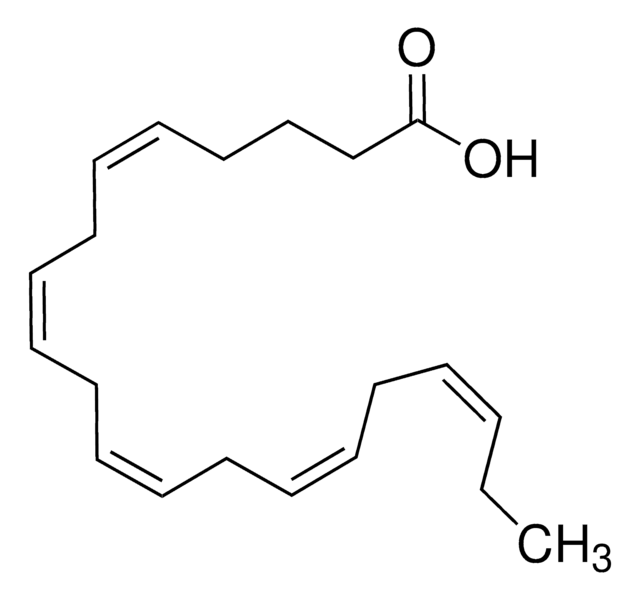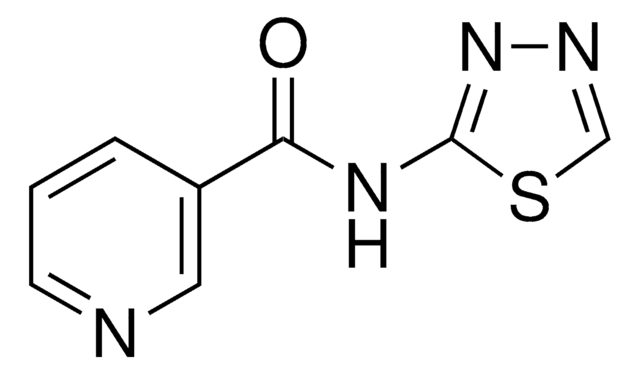10931
Arachidonic acid
>95.0% (GC)
Sinónimos:
cis,cis,cis,cis-5,8,11,14-Eicosatetraenoic acid, Eicosa-5Z,8Z,11Z,14Z-tetraenoic acid, Immunocytophyte
About This Item
Productos recomendados
biological source
fungus
Quality Level
assay
>95.0% (GC)
form
liquid
refractive index
n20/D 1.4872 (lit.)
bp
169-171 °C/0.15 mmHg (lit.)
mp
−49 °C (lit.)
density
0.922 g/mL at 25 °C (lit.)
functional group
carboxylic acid
lipid type
omega FAs
shipped in
dry ice
storage temp.
−20°C
SMILES string
OC(CCC/C=C\C/C=C\C/C=C\C/C=C\CCCCC)=O
InChI
1S/C20H32O2/c1-2-3-4-5-6-7-8-9-10-11-12-13-14-15-16-17-18-19-20(21)22/h6-7,9-10,12-13,15-16H,2-5,8,11,14,17-19H2,1H3,(H,21,22)/b7-6-,10-9-,13-12-,16-15-
InChI key
YZXBAPSDXZZRGB-DOFZRALJSA-N
¿Está buscando productos similares? Visita Guía de comparación de productos
Application
- in calibration curve generation in Raman spectroscopy and atomic force microscopy (AFM) in normal and breast cancer samples
- as a polyunsaturated fatty acid supplement to the reconstituted synthetic bile (RSB) in drug resistance analysis
- for the activation of mechanistic target of rapamycin 1 (mTOR1) and mTOR2
Biochem/physiol Actions
signalword
Warning
hcodes
Hazard Classifications
Eye Irrit. 2 - Skin Irrit. 2
Storage Class
10 - Combustible liquids
wgk_germany
WGK 3
flash_point_f
235.4 °F - closed cup
flash_point_c
113 °C - closed cup
ppe
Eyeshields, Faceshields, Gloves, multi-purpose combination respirator cartridge (US)
Certificados de análisis (COA)
Busque Certificados de análisis (COA) introduciendo el número de lote del producto. Los números de lote se encuentran en la etiqueta del producto después de las palabras «Lot» o «Batch»
¿Ya tiene este producto?
Encuentre la documentación para los productos que ha comprado recientemente en la Biblioteca de documentos.
Los clientes también vieron
Nuestro equipo de científicos tiene experiencia en todas las áreas de investigación: Ciencias de la vida, Ciencia de los materiales, Síntesis química, Cromatografía, Analítica y muchas otras.
Póngase en contacto con el Servicio técnico








